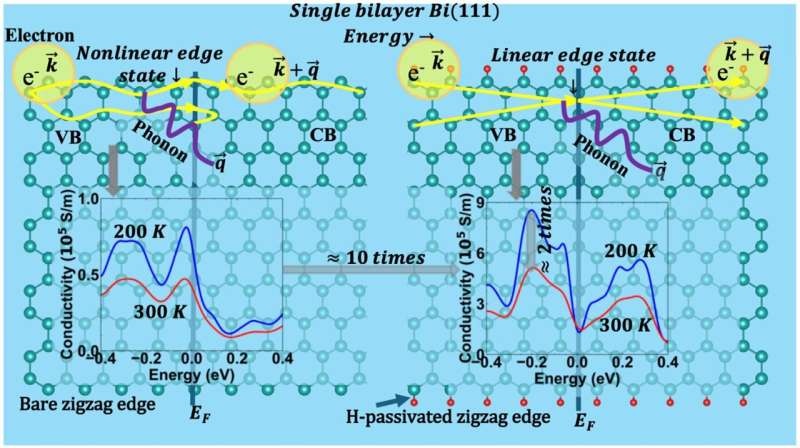Topological insulators have been proposed to exhibit a room-temperature topologically protected lossless energy transport regime, but Monash University researchers find that electron-phonon interactions impose useful constraints which are lost in the idealization of frictionless charge motion.

Land of the Gods (Lossless Energy)
So far, topological insulators are considered to be the answer for lossless energy transport and is a fervent dream of electronics and quantum computing world. One exceptional property of these materials is that they can be insulating in the bulk but conduct electricity at their edges or boundaries.
This so-called charge transport is unidirectional, due to the absence of an adverse backscattering phenomenon, which augurs for virtually dissipationless carrier transport. In fact, topological insulators are predicted to display this exotic lossless energy transport at ultralow temperatures and it does seem that many of them do deliver on this promise. Sustaining this miracle at room temperature, however, is an entirely different story, which brings carriers into intricate balance with phonons (quanta of lattice vibrations).
The Fall of the Topological Insulators — at Room Temperature
The Monash University led study into topological insulators lend support to the view, published in the journal Nanoscale, that topological insulators are high performance materials at ultralow temperatures buried under heavy constraints for room temperature applications.
Their calculations demonstrate that electron-phonon interactions, critical to the extreme resistance increase at higher temperatures — are responsible for this deviation. Based on theoretical modeling, the dominant backscattering mechanism at topological edge states is electron-phonon scattering, and thus its interactions with topological edge states are significantly linked to the dispersion of electronic edge states.
These electron-phonon interactions are far more pronounced with increasing temperature and in the nonlinearly dispersing edge states of native edges, as compare to linear dispersion edge states of passivated edges. This enhanced interaction manifests a very large energy dissipation over the range T = 200−400 K, undermining the premise of lossless energy transport at technologically relevant – ambient temperature.
Conclusion
This work emphasizes the importance of finding topological insulators that can host lossless energy transport in ambient temperatures for practical applications. This new insight into the importance of electron-phonon interactions can help guide the search for those, and also potentially suggest ways past some current limitations. Such challenges must be overcome in order for the full potential of topological insulators to be realised in electronic and quantum computing devices including quantum transistors and more generally, as a platform for future quantum devices. This new work opens the door to tailoring electron-phonon interactions in topological edge states, making it possible for researchers to develop practical techniques for stabilizing and scaling qubits, an essential requirement on the road to emerging quantum technologies.
